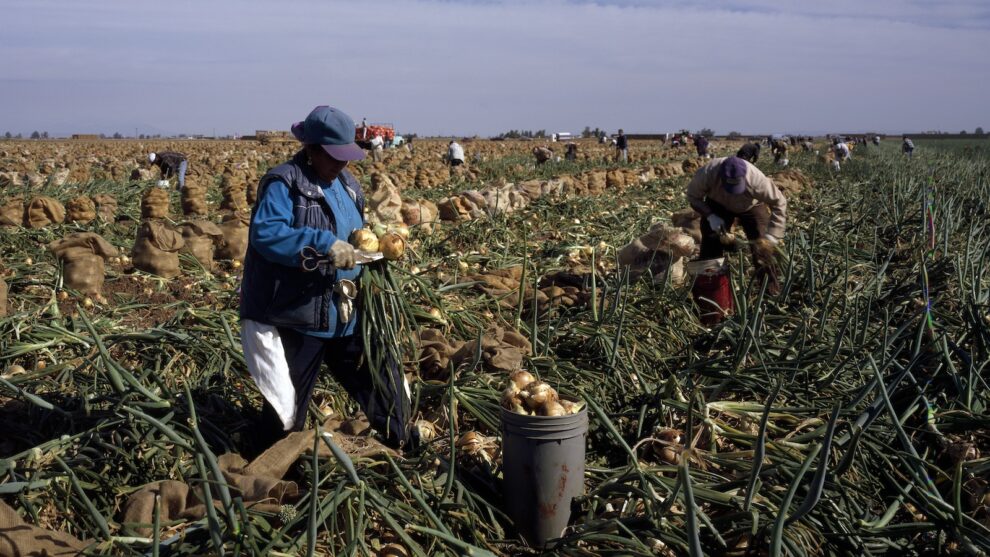Farm Journal uses data intelligence to help U.S. agriculture become more sustainable and resilient
Farming has always been a high-risk proposition. And more recent challenges—including farmland consolidation, technological advances, and evolving consumer expectations—have made running a farm more complicated than ever. At the same time, amid international conflicts and an increasingly fragile global supply chain, the role of American agriculture in feeding a growing population is more crucial than ever.
Farm Journal, an agricultural information and intelligence company with a long history of providing trusted news to U.S. agricultural producers, has observed firsthand the growing list of challenges farmers are facing. “Farmers represent less than 1% of the U.S. population, but practically everybody else wants something from them,” says Amy Skoczlas Cole, president of Farm Journal’s Intelligence and Influence business unit. “We work to help farmers navigate change.”
Carrying out this mission in ways that help producers become more sustainable and profitable—via the company’s extensive first-party data intelligence paired with its industry-leading media platforms—has earned Farm Journal a spot on Fast Company’s list of the world’s Most Innovative Companies for 2024.
SCALING REGENERATIVE FARMING
Since the days of the Dust Bowl, the U.S. government, land grant universities, and nonprofits have worked to educate farmers about agricultural practices that can benefit both the environment and a farm’s profitability. But despite nearly a century of programs and billions of dollars in investment, practices that protect soil health and store carbon—like minimum tillage or the use of cover crops—have not been widely embraced across farm country.
A team of data scientists and behavioral experts at Farm Journal wanted to understand why. Leveraging the company’s proprietary data on behaviors, attitudes, core values, and barriers, they identified the key drivers for sustainable practice change, and were able to assess what any given producer is missing in order to make a change. Utilizing the insights gained from this intelligence, they created the Human Dimensions of Change toolkit.
Josh VanDeWalle, lead for food chain memberships for collaborative member company Bayer, says, “A number of CPG companies, grocery retailers, and corporations, including Bayer, have made significant commitments in the sustainability space. More precise data on how to unlock change is essential in order to meet those goals. Working with the Human Dimensions of Change toolkit’s insights, we have witnessed how tailoring strategies to match farmers with the resources, information, and support can drive faster, more significant impact.”
The toolkit has been of great value to the food companies and conservation groups that partner with Trust In Food, a Farm Journal social-purpose initiative with a focus on regenerative agricultural practice adoption. One such group is the Midwest Row Crop Collaborative (MRCC), a partnership of companies and conservation organizations working to catalyze regenerative agriculture on 30 million acres of farmland. The MRCC put the Human Dimensions of Change data to the test last year—and the encouraging results of the collaboration were made public at ReachFarmersFaster.org.
With this unprecedented understanding of how farmers make decisions, Trust In Food’s partners can link them with the personalized information, resources, and support to put regenerative agriculture into practice. What’s more, Farm Journal used the data intelligence embedded in its Human Dimensions toolkit to kick-start its USDA Partnership for Climate Smart Commodities, a $40 million project to assist farmers in removing barriers and finding value in the use of on-farm technology that provides proof of regenerative agriculture practices.
HARVESTING THE POWER OF CONNECTIONS
Sustainable agriculture is just one of many areas in which Farm Journal sees its data and analytics playing a critical role. The organization is also helping agribusiness companies make smarter decisions that benefit both their stakeholders and the farmers they work with.
An agricultural retailer, for example, that has a more complete picture of how their grower customers make decisions can pass that actionable information to its agronomists in the field or the salespeople who, in turn, can better position inputs and services in a way that better supports their customers. It’s a similar story for all industries—producing food, fiber, and fuel—that intersect with agriculture. A better understanding of how farmers make decisions allows these companies to deploy their resources more efficiently and serve their farmer customers better.
“A change in a farmer’s operation is actually the last step in a complex series of decisions,” Cole said. “It is actually a lagging indicator. By measuring the leading indicators of agricultural change, we’re guiding those both within and outside agriculture to be more effective in connecting with growers in ways that meet their needs. At the end of the day, that’s what will lead to accelerated and lasting impact.”
Source: Fast Company















